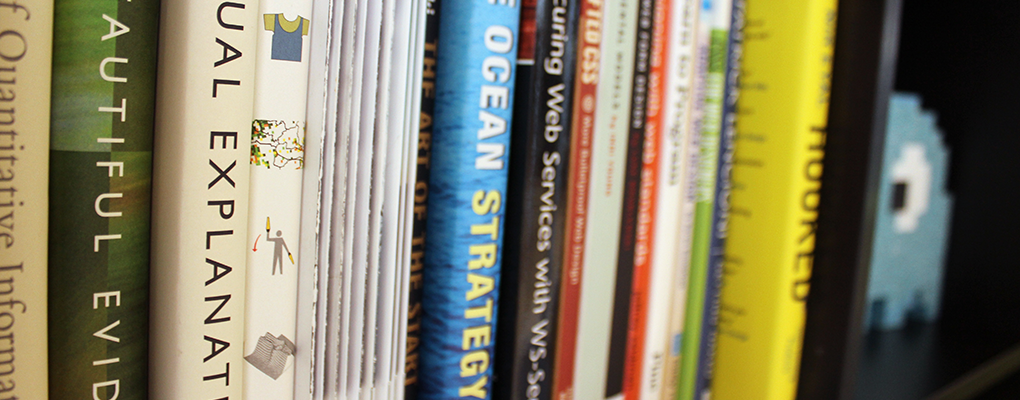
Ah, August: the month of shorter days, crisper mornings, and back to school butterflies. Luckily, we’re past the point of having to awkwardly carry around a lunch tray as we scan the room for a welcoming face to eat with.
Nonetheless, we are admirers of academia, browsers of books, lovers of literature, champions for — well, you get the picture — and that is why we continue to constantly digest design insight over the summer and throughout the year. This summer, we’ve enjoyed a wealth of fantastic design articles, videos, and more, and wanted to share some of our favorite reads (OK, and one video):
Getting Practical with Microcopy
Everything someone sees can impact their experience, and copy is often one of the most visible components of a digital touchpoint. Despite its prominence, the words through a UI, or microcopy, is too often an afterthought, even in otherwise well designed systems. As noted here, thoughtful, consistent microcopy can help bridge the gap between user and system and provide a clearer, more engaging, and more enjoyable experience. As a copy editor once upon a time, it’s hard for me not to obsess over word choice, so I’m always grateful for the opportunity to wordsmith something as narrow as a button or as broad as help and training materials.
Color in Design Systems
Plenty of great articles have been written on design that emphasize conceptual thoughts, rather than practical application. This Medium article by Nathan Curtis is one of the best at explaining different approaches to using color when creating a complex UI system.
I’d highly recommend this to anyone who would like a primer for using color to create a harmonious system, and account for accessibility for the screen.
Being an Empathetic Company
Leah Reich a User Centric researcher for Slack talks about the importance of empathy and feelings in the workplace in this video from The Conference in Malmö, Sweden last week.
“Empathy has morphed into a sort of catch all for our collective desire to give a shit.” – Says Reich.
Reich goes on to explain, empathy is not just giving a shit, it is a skill that everyone is responsible for on a team and you can learn to get better at it. But to get better at practicing empathy in the workplace we need to build workplaces that are safe to have feelings.
How the word empathy is tossed around in our society, it is easy to think either you are just empathetic or you are not, like it is something you are born with or not born with. Reich’s talk brings some practicality to the SKILL of empathy and how EVERYONE can learn to get better at it and workplaces can be better cultivators of empathic growth. This skill is important to me, because I always strive to better understand other peoples perspectives and experiences, because I can be an expert on visual design, but I will never be an expert on other peoples emotions and experiences.
Bonus Reading: Taking mental health discussions off the bench at work

The Capabilities Your Organization Needs to Sustain Innovation
Organizational innovation is complex and difficult to measure. It is not just more ink on more sticky notes or less walls in less departmental silos.
Innovation needs leadership that embraces and makes space for creative abrasion, creative agility, and creative resolution. In pointing out the value of each, this article (which draws from a 2014 book by the same authors) reminds me that the design process itself is perfectly adapted to lead innovation, and that innovation also is needed for individuals as well as organizations. Each day as a designer, I spend much of my time looking for new ways to uncover insights, balance the risks of trial-and-error iteration, and keep opposing options on the table in order to get to the heart of a challenge and find the solution. And, although design naturally helps organizations innovate, leadership may not always be there to support it. That’s why it’s inspiring to know that every individual can innovate by applying the same principles: grow your perspective, experiment over time, and do the difficult work of integrating conflicting ideas towards a goal.
When and How to Create Customer Journey Maps
Journey maps are my favorite document that we deliver to our clients. They are flexible enough to help tell nearly any story of a customer journey within a specific context, while also being powerful enough to capture touch points, user needs, goals, and pain points, and almost any other trackable metric you can think of.
I love that they help us explain our research, oftentimes weeks of research, in a visual way that our clients just “get.” We don’t have to put together a 40 page report that will be skimmed once and then forgotten, but can instead create a living document that will exist and grow long after we’re off the project. I think this article from Nielsen Norman Group does a great job of highlighting this wonderful document.
Bonus Summer Fun: Summer also means baseball. Hopefully this year ends as exciting as it did in 2011 (especially for a certain team that calls the North Side home). The incredible conclusion to the 2011 regular season and the childlike reactions from the guys at MLB Network: